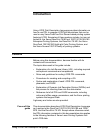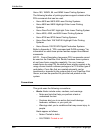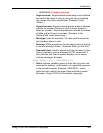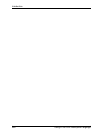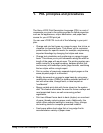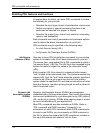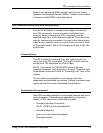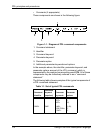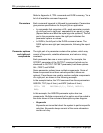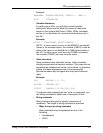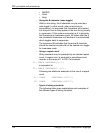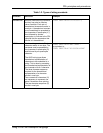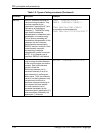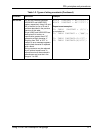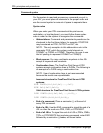
PDL principles and procedures
Using LCDS Print Description Language 1-5
Command
identifier
Some PDL commands require identifiers to precede their
command keywords. By coding an identifier before a command,
you associate the identifier with the command. This allows the
command to be referenced (by its identifier) by other commands
within the JSL. Some identifiers also determine the names of the
files that the Xerox Job Descriptor Compiler creates.
Different syntax rules apply to identifiers, depending on the
command being coded. Each command description in this
document tells you if an identifier is required (or optional) for the
command and if so, how it must be coded.
In most cases, in a JSL, if a command will be referenced by
another command within the JSL, an identifier must precede the
keyword of the referenced command. A command identifier is
defined using a label of up to six alphanumeric characters,
followed by a colon (:).
Two types of identifiers can be used:
1. ac type: Must have at least one alpha character, that is, a
letter.
2. dd type: May have all numerals, all alpha characters, or a
combination of both.
The following PDL command has the command identifier VFU1
and the command keyword is VFU.
The identifier in this command may have any number of blanks
following the VFU1 characters; however, no blanks are permitted
within the identifier name.
NOTE: A command that requires an identifier must always be
defined before any other command that references it.
Command
keyword
Every command must have a keyword, which is the “name” of
the command for which various parameters may be selected.
In the following example, CME is the command keyword (CME4
is the identifier).
In the next example, the command keyword OUTPUT can be
followed by any number of parameters, such as:
VFU1: VFU
ASSIGN=(1,1), TOF=1, BOF=55;
END;
CME4: CME LINE=(1,60), POSITION=5, FONT=2;
OUTPUT GRAPHICS=YES, DUPLEX=NO, FORMAT=PDFLT,
FORM=BAR;



